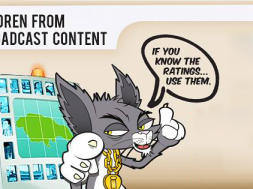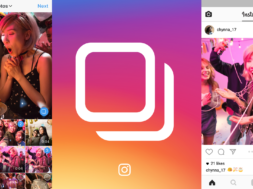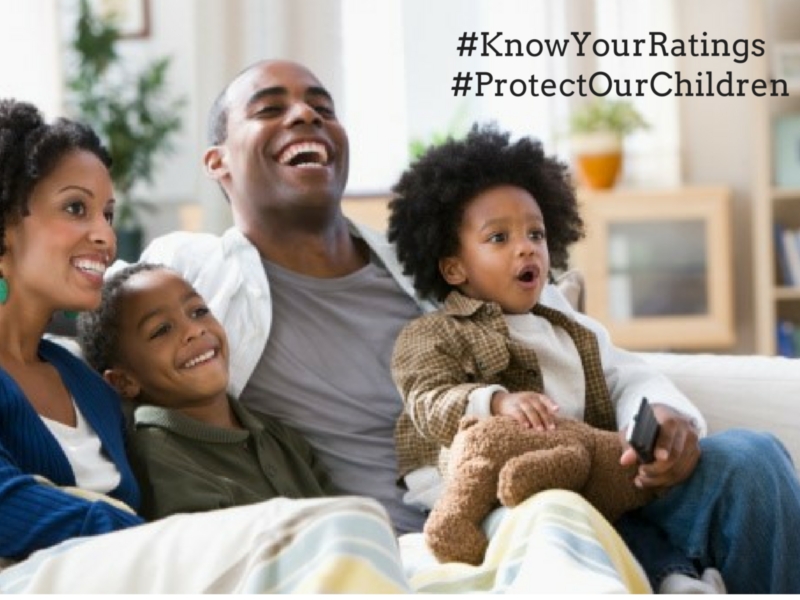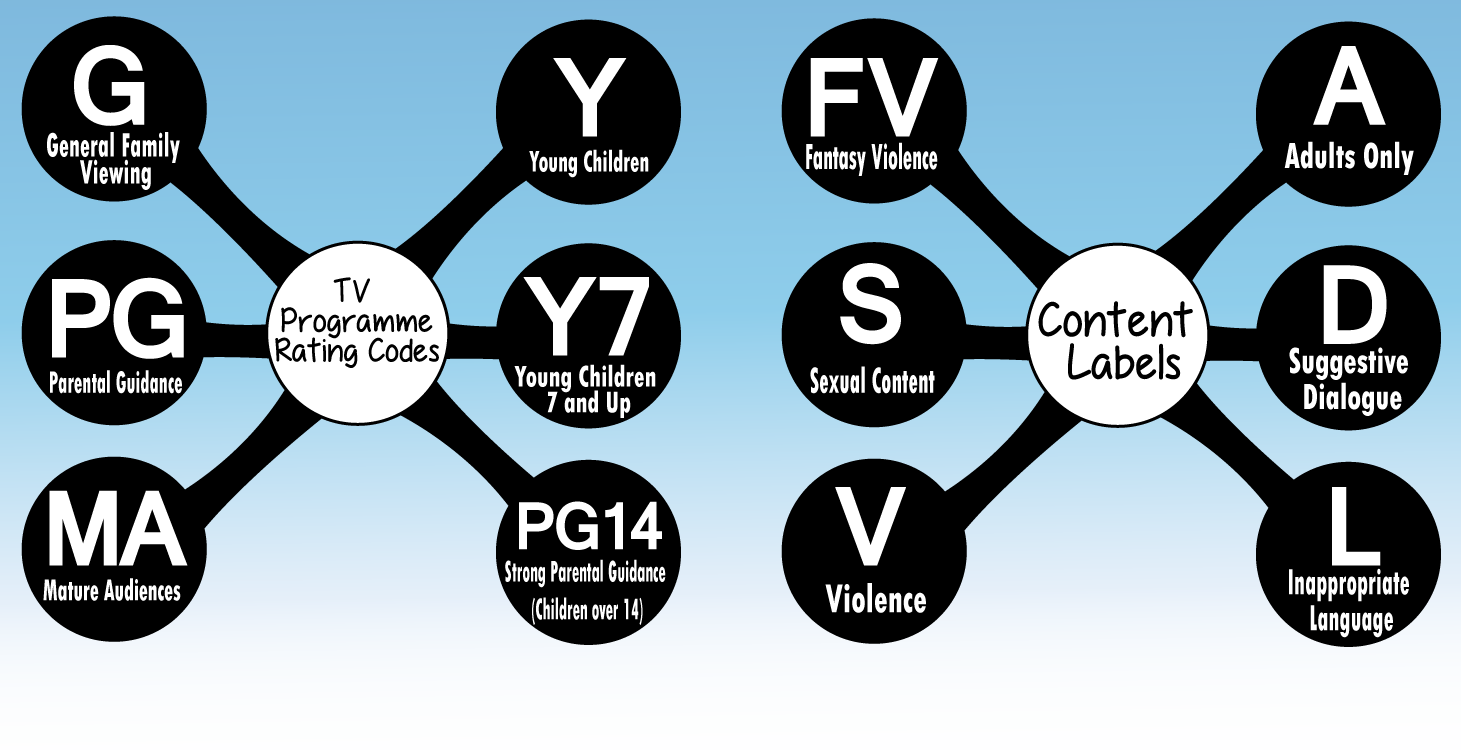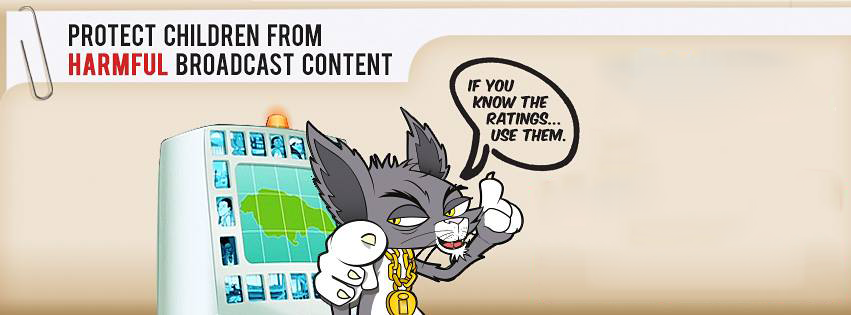
Since the late 1990s, it has become commonplace to see different rating codes displayed just before the start of TV programmes and/or while they are being aired. But do you know what they mean? As a parent, it is important that you understand what these symbols represent, especially as it relates to protecting your family from content that might be inappropriate. For example, there are certain programmes that should not be seen by young children and knowing what the ratings mean can help you to guide them accordingly.
To help you out, here is a list of the most popular ratings applied to TV programmes (cable) and what they mean.
- G – General: Programmes bearing a rating of G can be viewed by the whole family and are not necessarily for children alone. These programmes contain very little or no content that could be considered crude, suggestive or abrasive. They are child-friendly.
- Y – Young Children: This kind of programme is suitable for all children but specifically for those in the age range of 2 – 6. The themes of programmes with a Y rating are usually simple and usually do not contain content that will make children feel intimidated or uncomfortable.
- Y7 – Young Children 7 and Up: You should not allow your child to watch a progamme with this code if they are under 7 years old. It is generally accepted that children who are 7 years and older have the mental capacity to distinguish between reality and make-believe, so they will be more likely to handle the themes of shows with a Y7 rating. However, this code can be further extended to Y7FV, where the two additional letters mean fantasy violence and includes content that may be somewhat intense. As a parent, you may want to sit with your child while they are watching these shows to ensure you are comfortable with what is going on.
- PG – Parental Guidance: Progammes that are PG-rated are for older children, especially those entering puberty, and require parents to pay attention to what is being viewed. The content included in these programmes may include situations that are tricky to process for pre-teens and young teenagers, such as mild sexual content, low-level violence and some degree of adult language.
- PG14 – Strong Parental Guidance (Children over 14): Parents are cautioned to pay keen attention to programmes with this code and ensure that no child under the age of 14 watches them. This is because they often contain themes and situations that are highly suggestive in nature, along with strong sexual and violent content.
- MA- Mature Audiences: A programme with the code MA should only be viewed by audiences of a mature age, which is 18 and over. Children who are below 18, therefore, should be prevented from watching such content as they often contain any or all of the following: explicit sexual situations, highly indecent language, violence of a very graphic nature. The MA rating may also be used interchangeably with the NC-17 or R rating but these mostly apply to movies.
Content Codes
In addition to the TV programming codes, there are several content codes that you should also be aware of as they are used in conjunction with the programming codes.
- FV: This code depicts a make-believe (fantasy) kind of violence often shown in action animated shows.
- S: This code classifies content that is of a sexual nature.
- V: You can expect scenes of a violent nature in programmes with this content code.
- L: This symbol depicts language that might be vulgar and inappropriate.
- D: The content included in programmes with a D coding will contain suggestive dialogue.
- A: Adults only. No child should be allowed to watch movies of this nature.
Parents and guardians should make sure they watch out for the programming and content codes that are announced or displayed before and/or during the airing of shows that their children watch. Knowing the codes and what they mean will help you to act accordingly as it relates to your young ones who need your protection.
(3131)
-
Daviann Lindo
-
Nicole
-
Andre
-
Rosetta
-
charlygree
